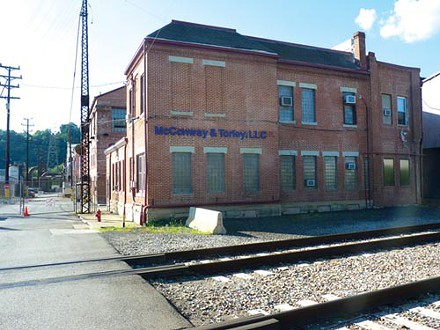UPDATE: Few weeks remain on Allegheny County Health Department public-comment period for Lawrenceville facility
The Allegheny County Health Department is accepting input from the public until mid-April regarding an operating permit it will issue to the McConway & Torley LLC steel foundry in Lawrenceville.
"We expect to get a lot of comments from citizens, environmental groups and the company as well," says Jim Thompson, deputy director of the health department. "We will consider all of the comments and then decide how we need to resolve them. When we issue the permit, we will issue a comment response."
The health department's comment response to a previous permit issued to the facility in 2010 can be seen here.
M&T creates steel castings for the railroad industry, which are mainly composed of chromium, manganese, nickel and silicon.
The health department regulates the facility, which is technically considered a "synthetic minor source" of pollution. Thompson says that means the facility has the potential to be a major polluter, but restricts its production to keep pollutant levels lower. The draft permit for M&T's foundry in Lawrenceville states a production limit of 21,500 tons of steel per year.
"The current limit is higher, somewhere around 90,000 tons of steel melted," says Joe Osbourne, legal director at the local air-quality watchdog organization Group Against Smog and Pollution (GASP). "At its current permitted production levels, given the way the ACHD is now calculating emissions, the plant would be a major source [of pollution], and would be operating without a major source permit. We want the plant’s maximum emissions to be under the major source threshold as the law requires.
A significant amount of pollutants from M&T are considered "fugitive emissions," Thompson says, meaning that these type of emissions aren't directed to one place — for example, a smoke stack. Instead, Thompson says, they may "waft out of the building."
"In the past what people have commented on are emissions of heavy metals that are coming from the plant — manganese, lead and chromium," Thomspon says. "That's why in one of their installation permits we put in there as a condition to build, they had to monitor those concentrations of heavy metals at the plant."
The monitor is located next to the facility and the results — listed as the Lawrenceville Toxic Metals Study — are reported on the health department website's air quality page. The most recent update shows levels from December-January.
According to the monitor data, the heavy metal manganese being measured from the plant exceeds the Environmental Protection Agency's Integrated Risk Information System (IRIS) by more than 50 percent. The IRIS tool is basically a measurement of the concentrations of a substance that it would take to effect human health; the EPA measures manganese because of its risk of possible neurological effects.
"The particulate-matter emissions from the plant are significant, but perhaps more worrying are the heavy metal emissions, particularly manganese," says Osbourne. "The bottom line is that when levels are consistently present that are higher than that [IRIS] value, there’s cause for concern. Manganese is a neuro-toxin, so it can cause a variety of neurological problems, reduced IQ, slowed reaction time and so on."
In 2011, GASP raised concerns about emissions of heavy metals from the plant and appealed a permit granted by the health department. City Paper reported on an agreement reached later that year between M&T and the GASP in which the company agreed to reduce dust and fumes exiting the facility.
GASP held a public meeting earlier this month to educate the public about participating in this latest permit process for the foundry.
"We have heard about a lot of complaints from people who live near the plant about odors," says Osbourne. "Given that, along with where it’s located [in a residential area] and what we’re seeing from the monitored data, we just thought that members of the community ought to have information about how to comment."
McConway & Torley did not respond to phone calls.
The health department will close the public-comment period on April 14 when it will hold a public hearing at 6 p.m. Oral testimony must be scheduled ahead of time.
Updated 3/27/2015.


